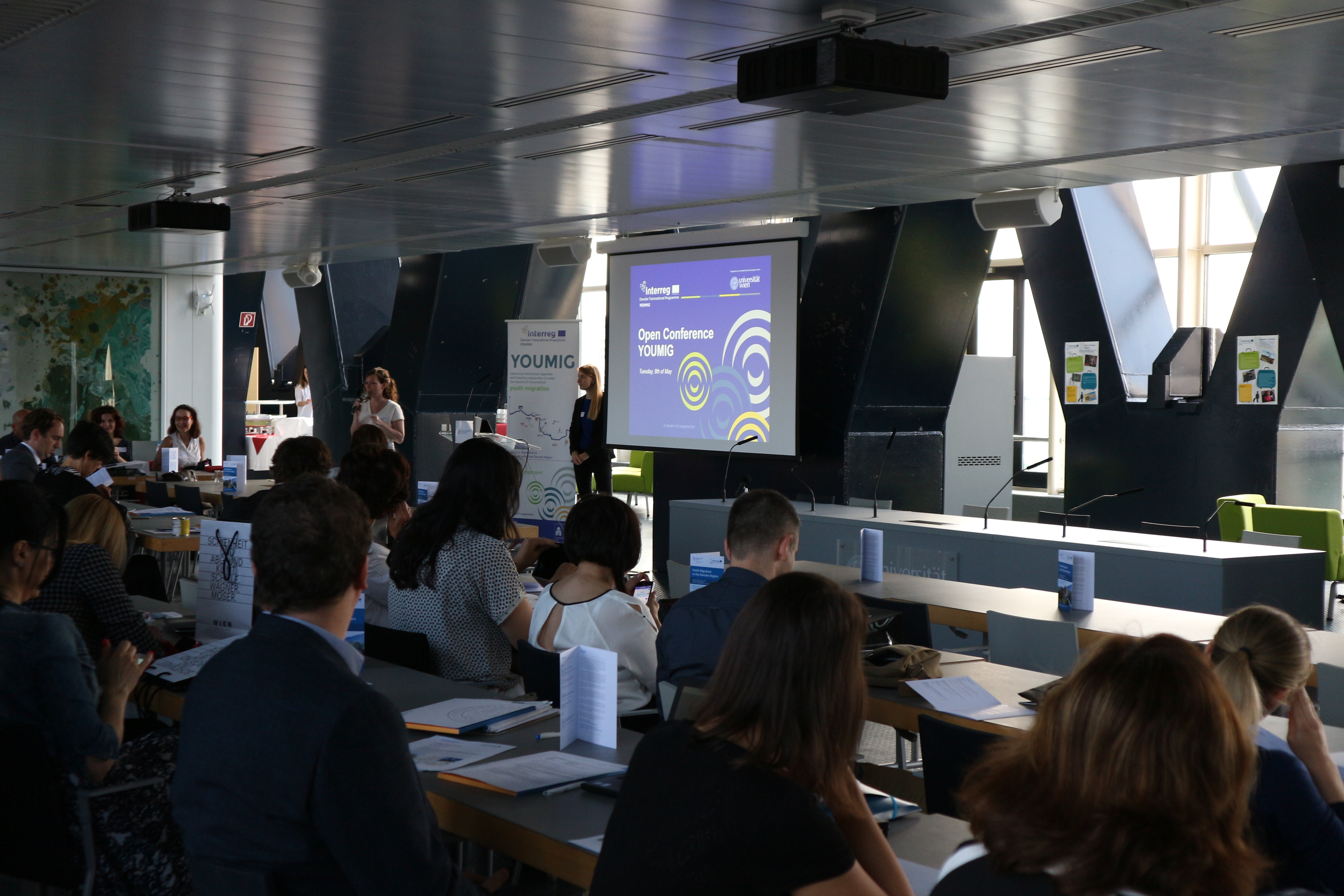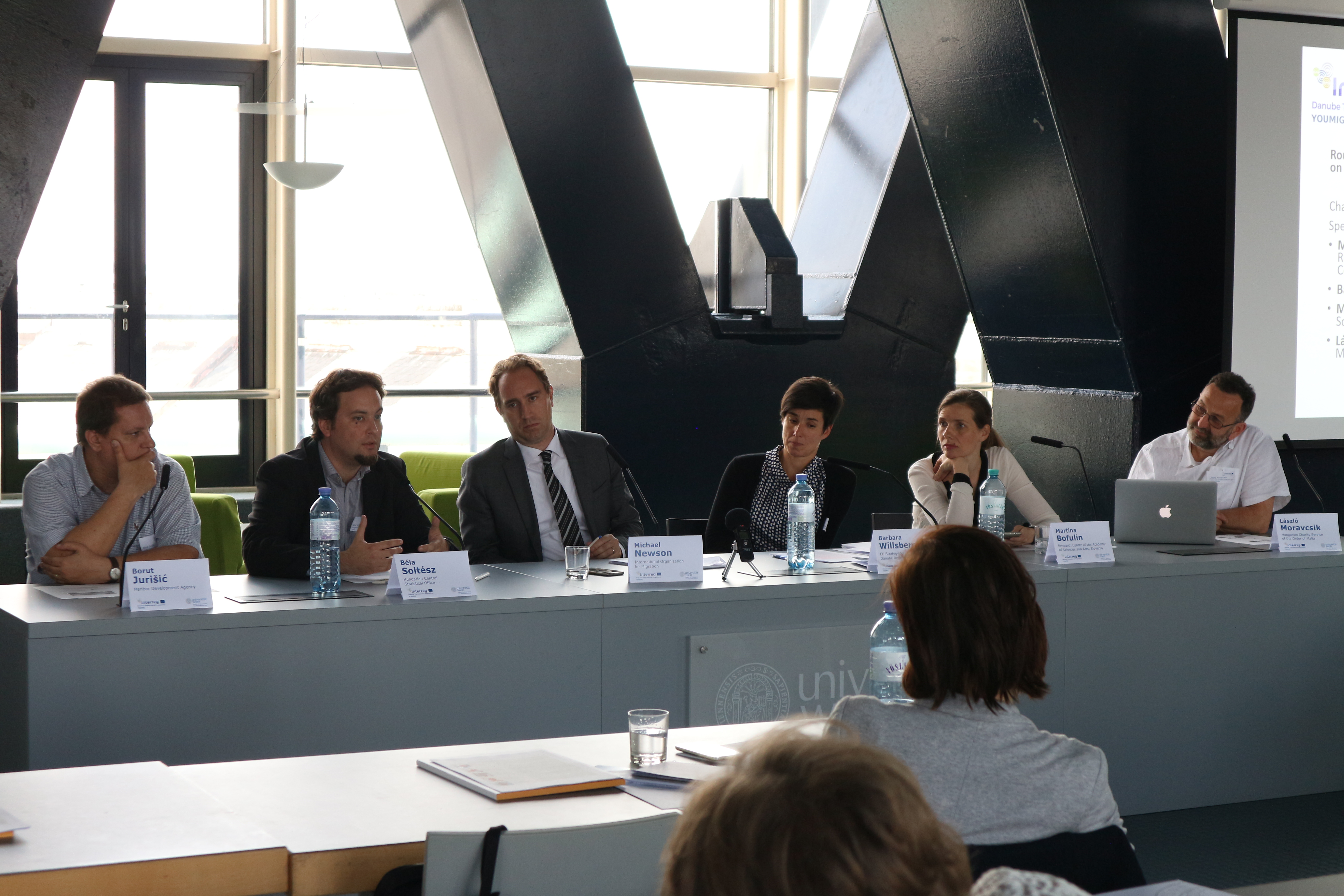YOUMIG - ‘Youth Migration in the Danube Region’ – Mid-term conference held in Vienna
20-05-2018
YOUMIG invited external guests to an open conference in order to present and discuss the first results of the two-and-a-half-year project. The partner University of Vienna hosted the conference.

"Since I've started with the research on youth migration, I realised that just everything is connected to this phenomenon" Aija Lulle from the University of Sussex stated in her keynote address. She presented the outcomes of an already finished project, "YMOBILITY", which was funded by Horizon 2020. The project focused on the motivations of young (potential) migrants in the European Union. According to the findings, the main motivations for young people to change their original place of residence are: better chances on the labour market, better pay, the start of studies abroad, but also a craving for adventure. For the regions and cities in Europe, immigration or emigration of the young is of great importance when it comes to future development. 
The YOUMIG team found similar results in its research, a "Multi-Level Overview", that was presented by Elisabeth Gruber from the University of Vienna. A common conceptual framework for the study of youth migration in the Danube region has been set up with harmonised definitions, and local “status quo analyses”, or case studies, highlighting the main challenges and potentials of youth migration in each of the partnering localities. In the Danube Region we find locations of immigration, as well as outmigration. Individual migrants have often just obtained skills in their country of origin, but are unable to apply them in their new destination, and therefore become overqualified in their jobs. This phenomenon is referred to as “brain waste”. For municipalities the challenge is that young and innovative people are leaving and in many cases do not come back. Still, when young people do return, this is a return also of cultural, social and often financial capital, which can be seen as a potential for the sending locations.
How these trends, mainly identified by qualitative research in the case of YOUMIG, might be observed also in quantitative data, was the topic of a roundtable discussion on statistical measuring. Since four statistical offices are part of the YOUMIG consortium, the idea of improving the measurement of migration and using statistical data for learning about the impact of youth migration is very much a part of the project. "The difficulty with data on migration is that they always present the reality of the registers, rather than the reality of migration" Stephan Marik-Lebeck from Statistik Austria said. Ramon Bauer from Vienna Statistics agreed, noting that the number of students in Vienna at 200,000 is probably underestimated due to many of them not registering. In Serbia, getting local-level data is next to impossible, Marija Mucic from the National Statistical Office of Serbia stated. Despite these challenges, Giampaolo Lanzieri, the head of the department for population statistics at Eurostat, insisted that data use and data comparison were improving constantly.
 Besides the discussion on measuring youth migration, the conference also hosted a roundtable for policy measures. One main feature of the YOUMIG project is that different stakeholders work together to improve tackling migration on a policy level. This is why the consortium includes seven municipalities, where new policy measures will be tested in the form of Pilot Activities and a One-Stop-Shop service.
Besides the discussion on measuring youth migration, the conference also hosted a roundtable for policy measures. One main feature of the YOUMIG project is that different stakeholders work together to improve tackling migration on a policy level. This is why the consortium includes seven municipalities, where new policy measures will be tested in the form of Pilot Activities and a One-Stop-Shop service.
During the roundtable discussion, Michael Newson, labour mobilities specialist at IOM's regional office in Vienna, mentioned that it is often not only the problem to have the right ideas for potential policies, but the challenge is rather to implement them in a way that people are actually reached by them. The sister DRIM project introduced its information sharing application called “Danube compass” and the project manager Martina Bofulin described the process of involving stakeholders and the target group, the migrants themselves, in design. László Moravcsik, project manager of the RARE project (Roma as Resource), explained that it was difficult to offer programmes that are recognized and trusted in their aim to support Roma people in getting better training and education. In response to questions about how policy can best be targeted, Barbara Willsberger, working on the EU Strategy for the Danube Region, mentioned the necessity of cooperation structures, such as the Danube Region Strategy, where stakeholders are coordinated and provided with funding opportunities and different networks are brought together.
In the last session of the open conference Jelena Predojevic-Despic (Institute of Social Sciences, Belgrade) presented an outlook on YOUMIG’s last workpackage, WP6, which is to elaborate strategies and policy recommendations based on all previous findings. Final results will also be included in a Data Toolkit, and ideas on what that tool should contain were put forward by activity leader Branislav Bleha from Infostat, Slovakia. The open conference was a great way for project partners to learn about new aspects of youth migration, to deepen already existing knowledge on the topic and to foster network connections.
Text by Elisabeth Gruber, UNIVIE
